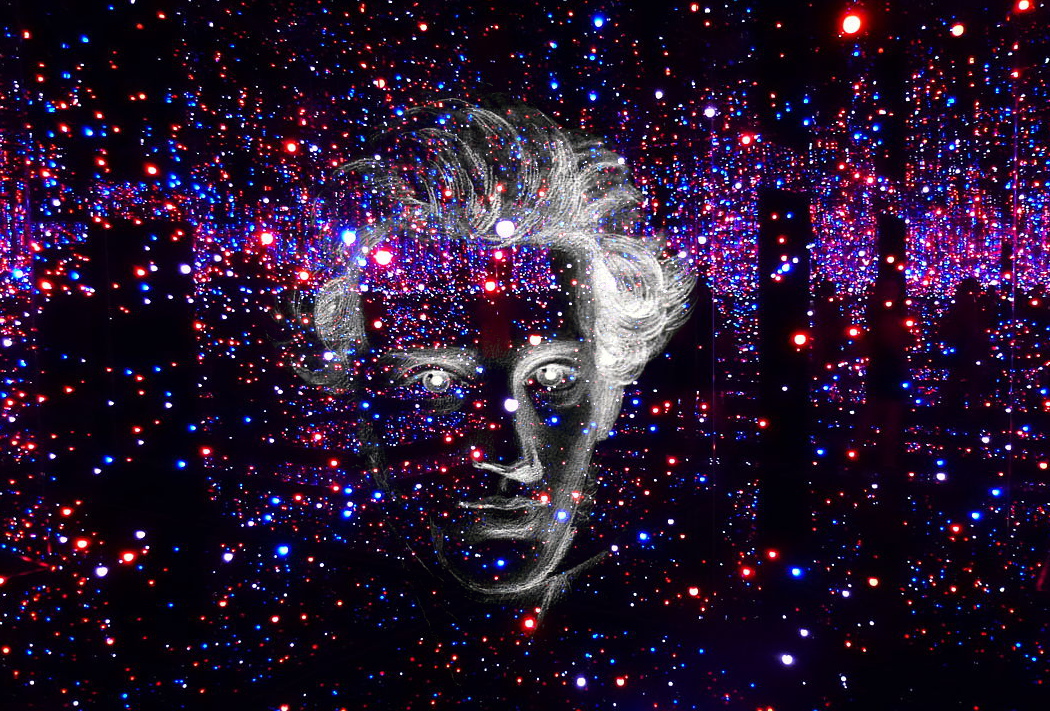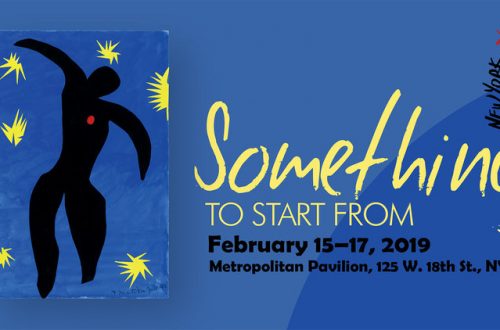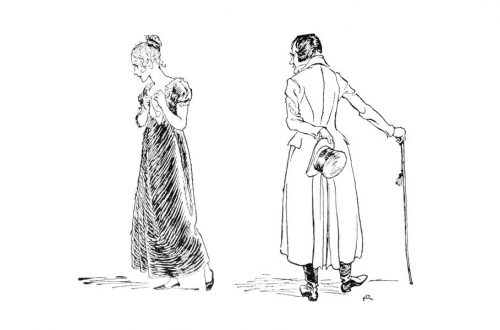by Matt Axvig
Learning to know anxiety is an adventure which every man has to confront…He therefore who has learned rightly to be in anxiety has learned the most important thing.
Søren Kierkegaard, The Concept of Anxiety
2016’s Arrival, directed by Denis Villeneuve and starring Amy Adams, Jeremy Renner and Forest Whitaker, was a huge commercial and critical success. Based upon a work of short fiction by Ted Chiang, Arrival tells the story of a linguist enlisted by the Army to find a way to communicate with an alien race who has made first-contact.
Chiang has followed his success with Exhalation, a new collection of philosophical science fiction stories. The last story in the collection concerns the possibility of human freedom in a world of chance. The challenge of freedom is presented using a popular version of the “many-worlds” interpretation of quantum mechanics. In that theory, the universe constantly splits into infinitely many different versions. (You may have seen it at work in Marvel’s Spider-Man: Into the Spider-Verse or Avengers: Endgame.) Some argue that this renders our decisions meaningless. For whatever choices we make in such a universe, there would always be another universe in which we had made the opposite choice. There would be no moral weight to our choices.
Chiang begs to differ:
I’m pretty confident that even if the many-worlds interpretation is correct, it doesn’t mean that all of our decisions are canceled out. If we say that an individual’s character is revealed by the choices they make over time, then, in a similar fashion, an individual’s character would also be revealed by the choices they make across many worlds. If you could somehow examine a multitude of Martin Luthers across many worlds, I think you’d have to go far afield to find one that didn’t defy the church, and that would say something about the kind of person he was.
Chiang titles the story with Søren Kierkegaard’s quotation, “anxiety is the dizziness of freedom.” Arguably what Kierkegaard did in his work, The Concept of Anxiety, was to maintain traditional freedom in a new therapeutic context, which we recognize as modern. By alluding to Kierkegaard’s work, Chiang signals his own interest in freedom. He aims to reconcile it with the problem of contingency posed by quantum mechanics. If the danger in classical physics is that freedom be marginalized by linear causation, a ghost in the machine as it were, the danger in quantum mechanics is that freedom be disintegrated into a series of [un]fortunate events. So Chiang, too, reconceives of freedom for modern times.
In existentialist philosophy, individual existence is understood to be necessarily anxious. Sooner or later each of us confronts the question of what it means to be me. Who am I as an individual existing in this time and place, as part of this family and this people? This most basic question is thrown at each of us, and there is no predetermined script. History has displayed human society and human individuality in all its multiform glory. So the lives we choose to lead form the answers that make us who we are. As Sartre, a later existentialist puts it, “existence precedes essence.” But if I were a camel, my reason for being would be a given. It would come along with my humps, and I would not have to wonder. So the experience of anxiety corresponds to the human condition of being unsettled in the old and open to the new.
Kierkegaard nuances this psychology in The Concept of Anxiety, while also drawing lines. He places it within limits set firmly by ethics. In a Christian context, he insists that however gray the area between ignorance and knowledge of good and evil, there is nevertheless a fine line between innocence and guilt. Coming of age in a fallen world may make it harder not to fall oneself, but one’s fall is still one’s own — otherwise sin is not sinful. And so Kierkegaard deftly balances psychological sensitivity with philosophical rigor, securing a place for anxiety in a Christian humanist tradition.
In Chiang’s story, when a recovering addict named Nat lands on a giant windfall, she worries it could trigger a relapse. For an addict, sudden fortune or misfortune are equally suspect. She would not have to work with Morrow (her shady co-conspirator) any longer, and in that case the adrenaline rush of the scam would no longer substitute for drugs. Moreover, money makes almost anything possible. She is thrown into “being able,” as Kierkegaard would put it, and she fears her newfound freedom. Still, she embraces the anxiety and refuses an easy way out:
“You worried about falling back into old habits? I could hold your money for you, keep it safe so you don’t spend it on the wrong things.”
Nat gave a little laugh. “Thanks, Morrow, but I think I’ll just take my share.”
“Anxiety is the dizziness of freedom,” indeed! But Nat does the right thing in refusing Morrow’s offer to hold her money. Consider the rest of the Kierkegaard passage that Chiang quotes. “Anxiety is the dizziness of freedom that emerges when spirit wants to posit the synthesis [of mind and body], and freedom now looks down into its own possibility and then grabs hold of finiteness to support itself.” In other words, Nat refuses a crutch that would have crippled her development. What she does with her share of the money takes the rest of the story to tell, but suffice it to say that she does something beautifully generous, out of love.
Ted Chiang’s story here overlaps Kierkegaard’s psychology on the concept of anxiety (indeed a therapist and a support group make an appearance). But it also makes forays into quantum mechanics. In another example, the therapist, Dana, is discussing an incident with her client, Jorge. Four weeks ago he had lost his temper and slashed the tires of his manager’s car. Feeling guilty for what he’d done as well as anxious about his anger problem, he goes to a prism broker. (Prisms allow communication between alternate timelines–this broker is called “Lydoscope,” “Selftalk” is another one.) He asks them to consult other timelines to see just how many versions of him acted the same way and found that six other versions of him had not. These paraselves had fantasized about it, and one came really close on the same day that he did it, but had stopped himself.
“What do you think that means?”
“It means that my puncturing his tires was a freak accident. The fact that I did it doesn’t say anything important about me as a person.”
Dana knew of people using prisms in a similar way, but it was usually someone justifying their actions by pointing out they might have done something worse. She hadn’t encountered this particular version of it before, where the defense was based on their parallel selves behaving better. She certainly hadn’t expected it from Jorge. “So you think your paraselves’ behavior is a reflection on you?”
It is and it is not. What it means is that, given his character, he was capable of acting better than he did. His paraselves achieved where he failed. The upshot is that becoming a vindictive, backstabbing employee is more within the realm of possibility for him now that he has actually acted it out. Next time it will be easier to act resentfully again. This is easily lost sight of with his prism, for Jorge sees his failure as an outlier on a bell-curve of possible realities. He calls it a “freak accident.” As he sees it, he is a strong person who deals straightforwardly with others, and so naturally his paraselves could handle conflict. He applies classical mechanics to his paraselves, as though they had to keep their cool given his essentially patient character. But the truth is that one’s existence transcends even one’s character, which one has to continually work to preserve. Jorge also applies quantum mechanics, somewhat inconsistently, to account for the single aberration of his own behavior at the far end of the curve. In his own case, he figures, a bunch of accidents must have come together in a fluke, worst-case scenario. Otherwise he would not have done something so out of character.
Not all prism users evade personal responsibility like Jorge. Others take responsibility for everything, for they are unnerved by their lack of control. Zareenah, whom we meet at a support group for prism users, blames herself for not getting her niece into Vassar as her paraself did. She must not have done enough, she reasons. Or was merely activating her prism enough to have a butterfly effect that led to the rejection? She overlooks the obvious, random occurence that an admissions officer could have had a particularly bad day in his or her own timeline, be it a traffic jam or a rainy forecast. Not everything that concerns us is our own doing. Many things simply happen to us outside of our control — much more than Zareenah realized before she got a prism and her neat world of personal agency was challenged.
Aside from individual differences, however, it is the impact on the public imagination as a whole that translates best to our own world outside the story — a world increasingly aware of contingency from the quantum level on up. Through technology, physics impacts the public metaphysic, as Chiang analyzes at length below:
Prisms had an enormous impact on the public imagination; even people who never used prisms found themselves thinking about the enormous role that contingency played in their lives. Some people experienced identity crises, feeling that their sense of self was undermined by the countless parallel versions of themselves. A few bought multiple prisms and tried to keep all their parallel selves in sync, forcing everyone to maintain the same course even as their respective branches diverged. This proved to be unworkable in the long term, but proponents of this practice simply bought more prisms and repeated their efforts with a new set of parallel selves, arguing that any attempt to reduce their dispersal was worthwhile.
Many worried that their choices were rendered meaningless because every action they took was counterbalanced by a branch in which they made the opposite choice. Experts tried to explain that human decision-making was a classical rather than quantum phenomenon, so the act of making a choice didn’t by itself cause new branches to split; it was quantum phenomena that generated new branches, and your choices in those branches were as meaningful as they ever were. Despite such efforts, many people became convinced that prisms nullified the moral weight of their actions.
Few acted so rashly as to commit murder or other felonies; the consequences of your actions still fell on you in this branch, not any other. But there was a shift in behavior that, while falling short of a mass outbreak of criminality, was readily discernible by social scientists. Edgar Allan Poe had used the phrase “the imp of the perverse” to describe the temptation to do the wrong thing simply because you could, and for many people the imp had become more persuasive.
At the story’s climax, Nat agonizes over whether her looming decision matters, if indeed in another world she chooses wrong. As she agonizes, a fellow in her support group reassures her logically that it is not so. This does not seem to help. She complains: “That proves that the argument can’t be right, but it doesn’t explain why it’s wrong.” Nat wants to understand how her freedom can operate in this new world of prisms and paraselves. She wants to know why she does not have inconsistent paraselves, not just that she does not have them. So she pursues the conversation further.
And perhaps that is why Ted Chiang writes science fiction. It allows him to take abstract philosophical and technological frontiers and to imagine them concretely in a world of real people. It is a fun and challenging experiment that makes for compelling reading, and the surprising pay-off is that this imagined world turns out to shed light on our own with all its contingency and dizzying freedom.
Interested in exploring further? Follow the links below:
For another take on quantum mechanics and human freedom, watch “The Freedom of the Physical World: Are You a Machine” by Dr. Craig Lent of the University of Notre Dame.
If you are wondering more about the concept of personal and moral choice, see this Radiolab feature for more food for thought.

Matt Axvig is a teacher from Minneapolis, MN and father of two boys and two girls. He enjoys driving (sometimes aimlessly) and listening to music. He loves playing tennis and wakes up in the middle of the night to watch the Australian Open every January. He dreads Roger Federer’s retirement. And midway through his life’s journey, he takes satisfaction in having made several leaps of faith – going away to college in Chicago, majoring in philosophy, getting married and having children, living abroad in Peace Corps Moldova, quitting jobs with nothing lined up, switching careers, and joining the Eastern Church.
Header Image: “Infinity Rooms” By Pablo Trincado from Santiago de Chile, Chile – Yayoi Kusama CC BY 2.0 remixed by Jon Balsbaugh with sketch of Søren Kierkegaard under the same licence.





